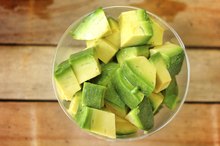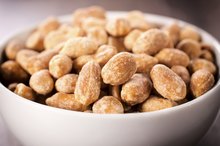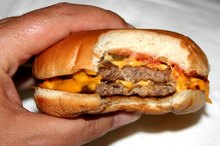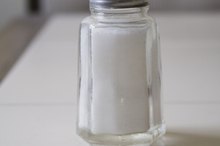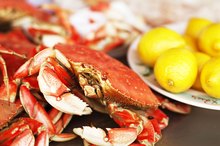What does fact checked mean?
At Healthfully, we strive to deliver objective content that is accurate and up-to-date. Our team periodically reviews articles in order to ensure content quality. The sources cited below consist of evidence from peer-reviewed journals, prominent medical organizations, academic associations, and government data.
- Harvard School of Public Health: Understanding Cholesterol: The Good, the Bad, and the Necessary
- Cleveland Clinic: Cholesterol Guidelines
- Harvard School of Public Health: Fats and Cholesterol
The information contained on this site is for informational purposes only, and should not be used as a substitute for the advice of a professional health care provider. Please check with the appropriate physician regarding health questions and concerns. Although we strive to deliver accurate and up-to-date information, no guarantee to that effect is made.
What is the RDA for Cholesterol?
Cholesterol gets a bad rap 1. This fatty substance, also known as a lipid, is often shunned by health enthusiasts. However, bad reputation aside, cholesterol plays several vital roles in the body. For starters, it acts as a precursor to vitamin D and the sex hormones estrogen and testosterone, which play a role in reproductive health. Cholesterol also makes up the outer coating of your cells and enables your body to make bile -- a substance needed to properly digest fats 4.
Know Your Limits
According to the Institute of Medicine, the body can synthesize all the cholesterol it needs to function. Because of this, cholesterol recommendations are given as an upper limit, rather than an recommended dietary allowance or RDA. The current recommendation from the Food and Nutrition Board, which is a subgroup of the Institute of Medicine, is to consume no more than 200 milligrams of cholesterol per day.
What to Choose and What to Lose
What Role Do Lipids Play in the Human Body?
Learn More
It's important to note that cholesterol is solely derived from animal based foods. If you are trying to curtail your cholesterol intake, stick to plant-based foods - such as:
- grains
- fruits
- vegetables
- nuts
- seeds - as they do not contain any cholesterol
Choosing non-fat milk is a great way to stay under the cholesterol recommendations, as non-fat milk contains only 4 milligrams of cholesterol per cup, compared to 33 milligrams in its whole milk counterpart. Eggs are also a significant source, at 212 milligrams of cholesterol per egg.
Related Articles
References
- Harvard School of Public Health: Understanding Cholesterol: The Good, the Bad, and the Necessary
- Cleveland Clinic: Cholesterol Guidelines
- Harvard School of Public Health: Fats and Cholesterol
- University of California San Francisco: Cholesterol Content of Foods
- American Heart Association. What is cholesterol?
- Cleveland Clinic. Cholesterol: What you need to know about high blood cholesterol. May 1, 2019.
- National Center for Health Statistics. Total and high-density lipoprotein cholesterol in adults: United States, 2015–2016. October 2017.
- Centers for Disease Control and Prevention. Cholesterol.
- Barter PJ. The causes and consequences of low levels of high density lipoproteins in patients with diabetes. Diabetes Metab J. 2011;35(2):101-106. doi:10.4093/dmj.2011.35.2.101
- American Heart Association. How to get your cholesterol tested.
- Keene D, Price C, Shun-shin MJ, Francis DP. Effect on cardiovascular risk of high density lipoprotein targeted drug treatments niacin, fibrates, and CETP inhibitors: meta-analysis of randomised controlled trials including 117,411 patients. BMJ. 2014;349:g4379. doi:10.1136/bmj.g4379
- Tall HR, Rader DJ. Trials and tribulations of CETP inhibitors. Circulation Research. Oct. 10, 2017.
- U.S. Food and Drug Administration. Cholesterol: Medicines to help you.
Writer Bio
Lindsay Boyers has a Bachelor of Science in nutrition from Framingham State College and a certificate in holistic nutrition from the American College of Healthcare Sciences. She is also a licensed aesthetician with advanced training in skincare and makeup. She plans to continue on with her education, complete a master's degree program in nutrition and, ultimately, become a registered dietitian.
